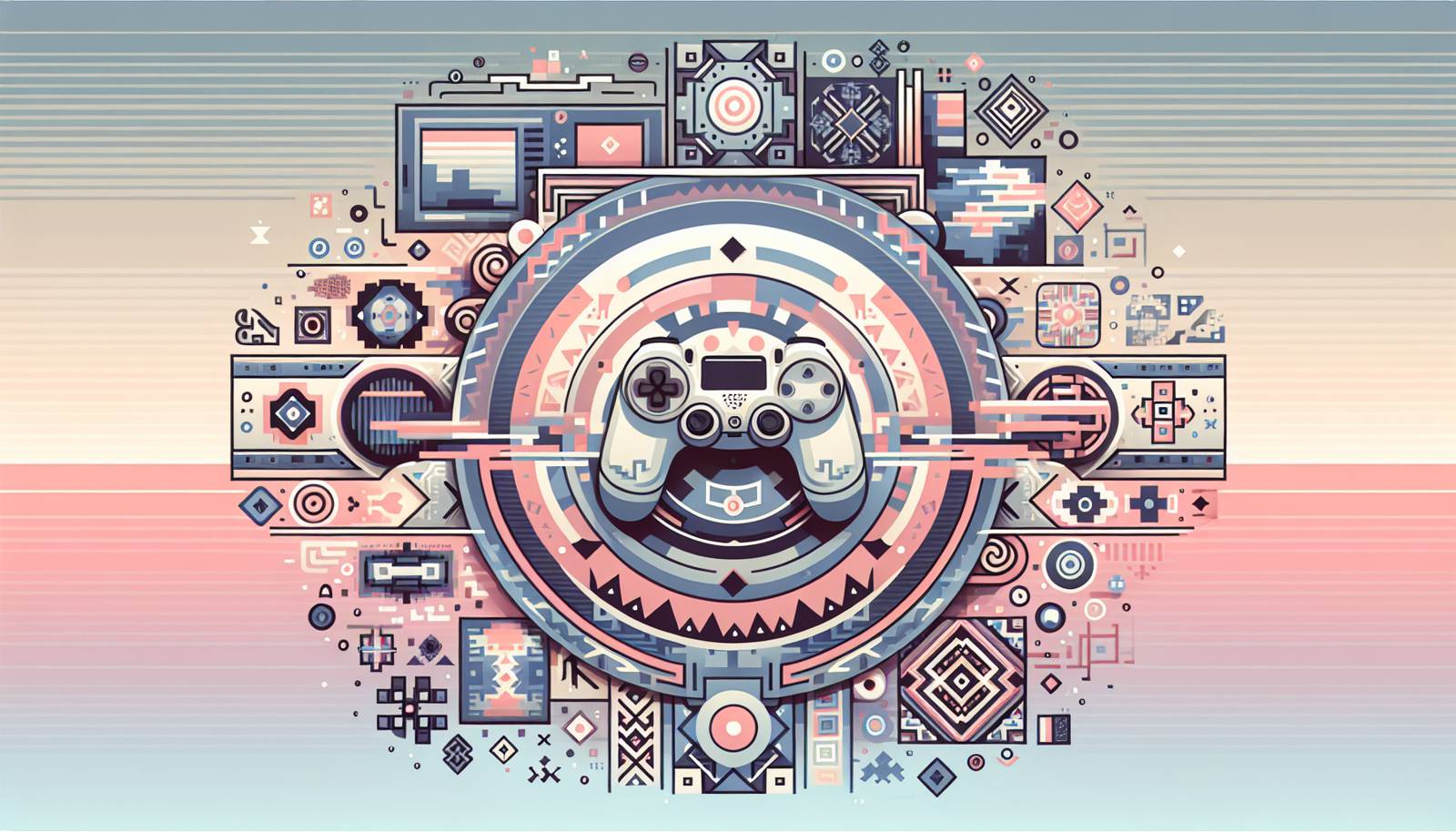
FAQ About The Role of Cultural Artifacts in Video Games

What are cultural artifacts in video games?
Cultural artifacts in video games refer to objects, symbols, or elements that represent cultural, historical, or societal significance within a game. These artifacts can be real-world items or fictionalized pieces inspired by a particular culture or time period, used to enhance storytelling, create immersive environments, or educate players about different cultural narratives.

How do cultural artifacts enhance storytelling in video games?
Cultural artifacts enhance storytelling in video games by providing depth to the narrative and giving players insights into the cultural and historical backgrounds of the game world. By incorporating artifacts such as traditional clothing, historic architecture, or symbolic objects, creators provide context that enriches the story, makes it relatable, and helps players feel more immersed in the virtual environment.

Can video games serve as educational tools through cultural artifacts?
Yes, video games can serve as educational tools through the use of cultural artifacts. By integrating historically accurate artifacts and cultural references, games can teach players about different cultures, traditions, and historical events in an engaging and interactive way. This educational aspect encourages players to learn more about the real-world contexts from which these elements are drawn.

What is an example of a video game effectively using cultural artifacts?
An example of a video game effectively using cultural artifacts is 'Assassin's Creed.' This series is known for its detailed representation of historical events and cultural elements, such as ancient architecture, clothing, and language. These elements are carefully researched to provide an immersive and educational experience that reflects the time periods and cultures portrayed within the games.

Do all video games include cultural artifacts?
Not all video games include cultural artifacts. While many games use these elements to enhance storytelling and create immersive environments, others may focus on fantasy or sci-fi settings that do not rely on real-world cultural references. The inclusion of cultural artifacts largely depends on the game's theme, setting, and narrative goals.

How do cultural artifacts impact the player's experience?
Cultural artifacts impact the player's experience by providing authenticity and depth to the game world. They help create a more realistic and immersive environment, which can lead to greater emotional engagement and a stronger connection to the narrative. These artifacts also offer educational value, making the gaming experience more enriching and informative.

What challenges do developers face when incorporating cultural artifacts in video games?
Developers face several challenges when incorporating cultural artifacts in video games, including ensuring accuracy and sensitivity. It is crucial to represent cultures authentically without perpetuating stereotypes or offending cultural groups. This often requires extensive research and collaboration with cultural experts to ensure that the representations are respectful and educational.

Are cultural artifacts in video games always historically accurate?
Cultural artifacts in video games are not always historically accurate. While some games strive for authenticity and educational value, others may take creative liberties to fit the narrative or gameplay mechanics. Players should be aware that not all representations are meant to be precise historical accounts, and they should consider exploring additional resources for more accurate information.

Why is the representation of cultural artifacts important in video games?
The representation of cultural artifacts is important in video games because it contributes to a richer, more diverse narrative and fosters cultural understanding and appreciation. By accurately depicting different cultural elements, games can challenge stereotypes, promote inclusivity, and offer players a chance to explore and learn about cultures beyond their own.

Can cultural artifacts lead to cultural appropriation in video games?
Yes, cultural artifacts in video games can lead to cultural appropriation if not handled with care and respect. Cultural appropriation occurs when cultural elements are used out of context or without permission, often leading to misrepresentation and disrespect. Developers need to approach cultural artifacts with sensitivity and awareness to avoid these issues and ensure that representations are respectful and authentic.

How do developers ensure the respectful inclusion of cultural artifacts in video games?
Developers can ensure the respectful inclusion of cultural artifacts in video games by conducting thorough research and consulting with cultural historians, anthropologists, and members of the communities being represented. Collaborating with these experts helps to ensure accurate and sensitive depictions, respecting cultural nuances and avoiding stereotypes.

What role do cultural artifacts play in world-building in video games?
Cultural artifacts play a critical role in world-building by adding layers of authenticity and history to a game's environment. They help establish the cultural and societal backdrop against which the game unfolds, providing depth and a sense of reality. This not only enhances the immersive quality of the game but also enriches the player's interaction with the game world.

Can cultural artifacts in video games influence real-world perceptions of a culture?
Cultural artifacts in video games can indeed influence real-world perceptions of a culture. By introducing players to different cultural elements and narratives, games have the potential to shape understanding and appreciation of diverse cultures. However, this also means there is a responsibility on developers to present these cultures faithfully to avoid fostering misconceptions or stereotypes.

How do video games balance entertainment and education when using cultural artifacts?
Video games balance entertainment and education by integrating cultural artifacts into the gameplay and narrative in engaging ways. Developers strive to create an enjoyable experience while also providing educational insights, often through interactive storytelling, puzzles, and exploratory elements that encourage learning without detracting from the entertainment value.

What is the player's role in interacting with cultural artifacts in video games?
The player's role in interacting with cultural artifacts is to explore and engage with these elements within the game environment. Doing so can provide a deeper understanding of the game's narrative and enrich their overall experience. Players may also be encouraged to research or learn more about the cultural contexts represented, fostering active learning beyond the game.

How do cultural artifacts enhance character development in video games?
Cultural artifacts can enhance character development by grounding characters in their cultural backgrounds, providing context for their beliefs, behaviors, and motivations. These artifacts can give clues about a character’s history and personal journey, making them more relatable and compelling to players.

Can cultural artifacts in video games contribute to cross-cultural dialogue?
Yes, cultural artifacts in video games can contribute to cross-cultural dialogue by opening up conversations about the depicted cultures and promoting a better understanding among players from different backgrounds. This dialogue can foster empathy and awareness, encouraging players to appreciate and respect cultural diversity both in the game and in real life.

What are some common misconceptions about cultural artifacts in video games?
Some common misconceptions include believing that all cultural artifacts are historically accurate or that their inclusion guarantees an educational experience. It is essential to recognize that while games can provide valuable insights into different cultures, they are ultimately works of fiction with varying degrees of accuracy and should be supplemented with further research for educational purposes.

How have cultural artifacts in video games evolved over time?
Cultural artifacts in video games have evolved significantly as the industry has matured. Early video games often included simplified or stereotypical representations, whereas modern games tend to focus on more authentic and nuanced portrayals. This evolution is driven by increased awareness of cultural sensitivity and the growing demand for diversity and realism in game narratives.

What is the future of cultural artifacts in video games?
The future of cultural artifacts in video games looks promising as developers continue to explore new ways to integrate these elements into their storytelling expansively and respectfully. With advances in technology, there is potential for even more accurate and immersive representations that can educate and engage players globally, fostering a greater appreciation for cultural diversity.
